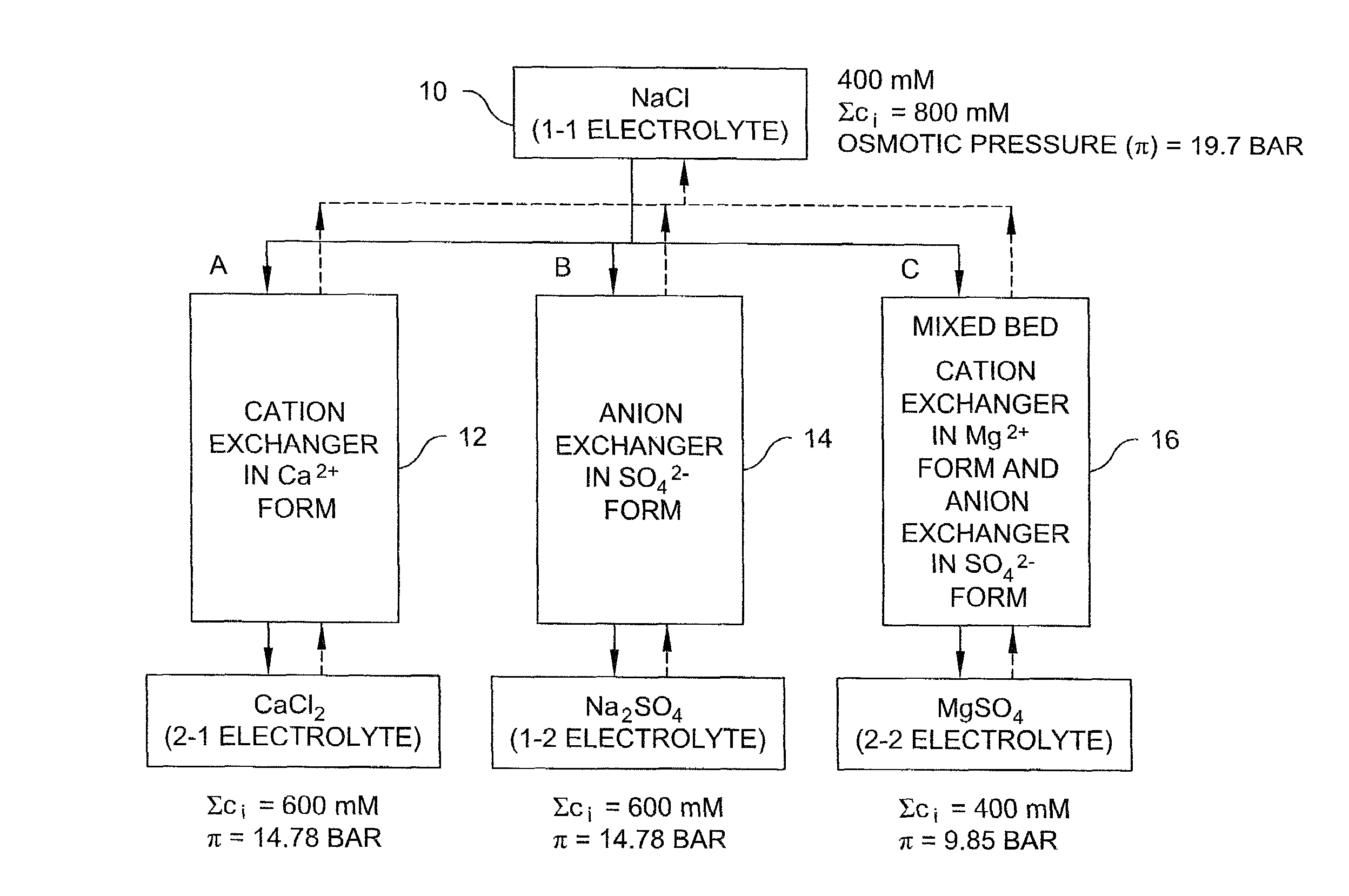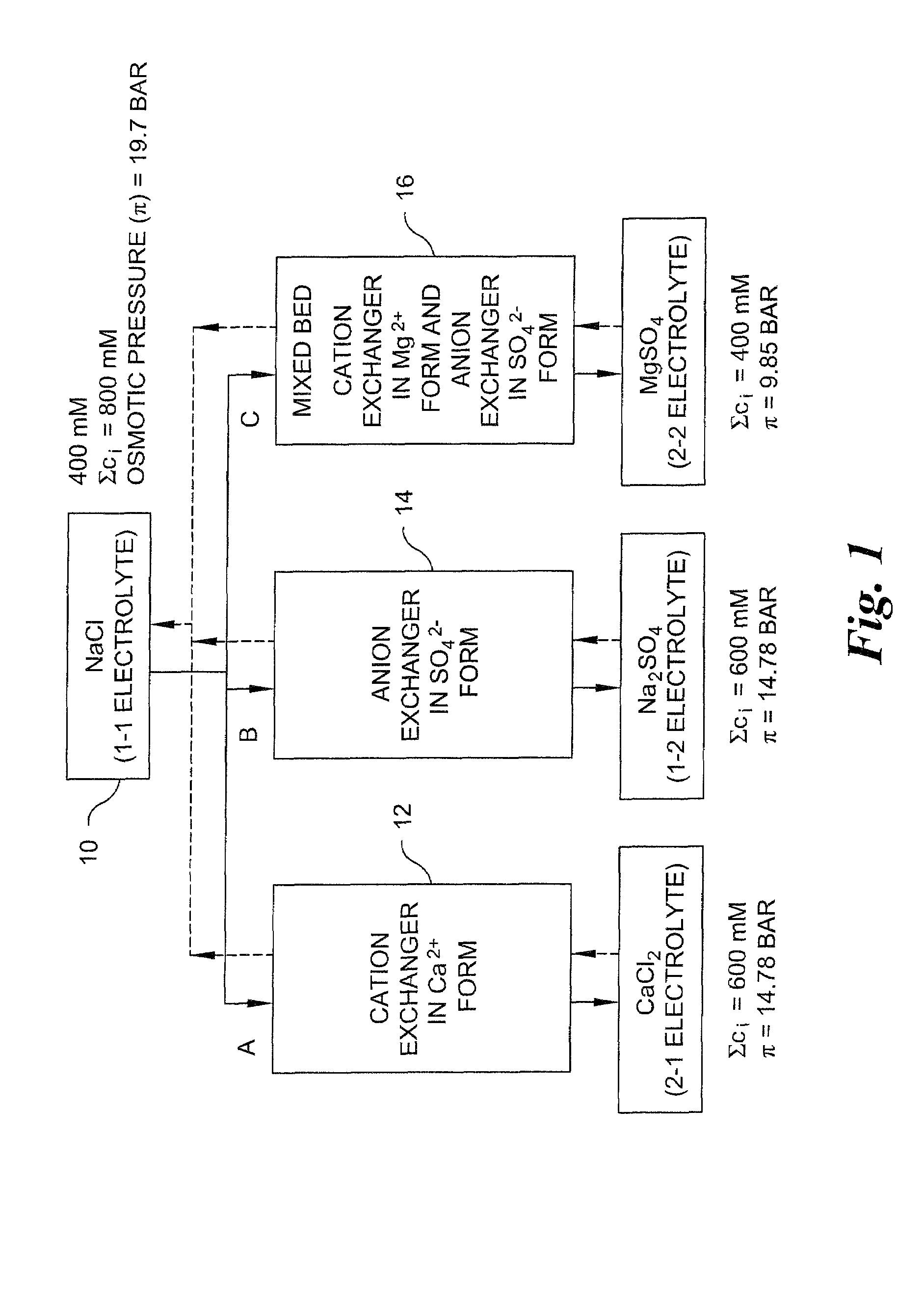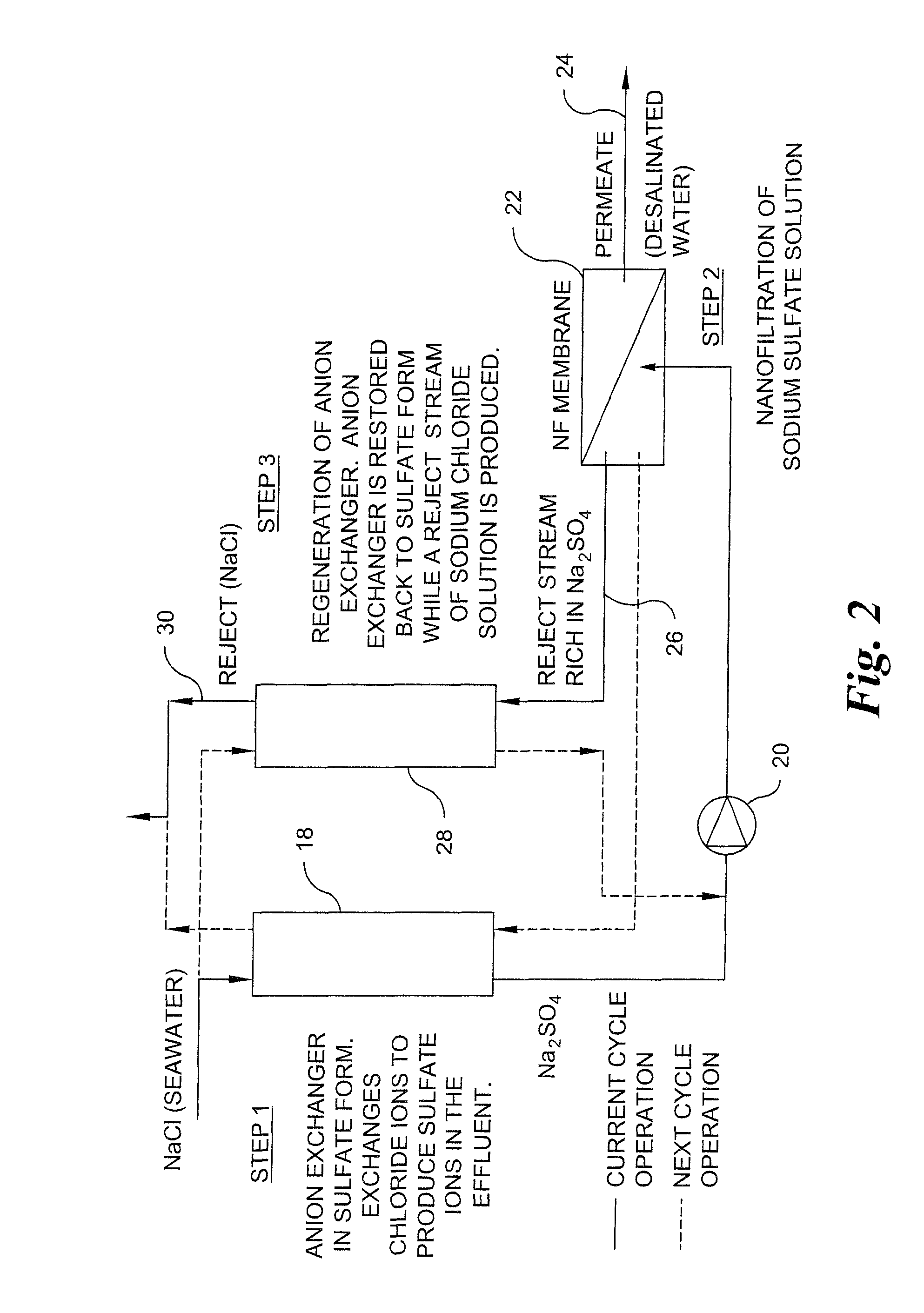Brackish and sea water desalination using a hybrid ion exchange-nanofiltration process
a technology of ion exchange and nanofiltration, which is applied in the direction of water/sewage treatment by ion exchange, liquid/fluent solid measurement, peptides, etc., can solve the problem that the nanofiltration membrane offers less resistance to flow, and achieve the effect of reducing the energy needed
- Summary
- Abstract
- Description
- Claims
- Application Information
AI Technical Summary
Benefits of technology
Problems solved by technology
Method used
Image
Examples
example 1
[0054]Different concentrations of solutions containing sodium chloride and sodium sulfate were subjected to pressure-driven nanofiltration and reverse osmosis, where the permeate flux, salt concentrations in the feed and permeate and differential feed pressures (transmembrane pressures) were monitored. Both the nanofiltration membrane (product name: SR-90) and the reverse osmosis membrane (product name: SWHR) used in this example were manufactured by Dow Chemicals, Inc. A test set-up, utilizing a flat leaf membrane cell 32, manufactured by GE Osmonics Inc. under the model name SEPA CF II, is shown schematically in FIG. 3.
[0055]In this test apparatus, feedwater from a reservoir 34 was pumped through the flat leaf membrane cell 32 by a positive displacement pump 36. The reservoir was a 30 liter vessel having a stirrer (not shown) and was provided with a cooling water coil 38 and a temperature indicator 40. A permeate line 42, led from the outlet side of the membrane cell 32 to the res...
example 2
[0065]The ion exchange process used in the Hybrid ion exchange-nanofiltration process can either consist of cation exchange resins or anion exchange resins or both. In this example, anion exchange resin was utilized ahead of the nanofiltration process. The anion exchanger was initially transformed to divalent or higher valent anion form by contacting with a solution of the electrolyte that contains the anion. In this example, the anion exchange resin (Purolite Inc., A-850) was initially transformed to sulfate form by passing calcium sulfate solution through the resin bed. As a result, the anion exchange resin was converted to sulfate form. When a saline solution having 560 mM sodium chloride was passed through the resin, the resultant solution contained 560 meq / L of sulfate ion (280 mM). The resultant solution was then subjected to the nanofiltration. In the nanofiltration step, a salt-free permeate was obtained, leaving behind a concentrated brine containing sodium and sulfate ions...
example 3
[0068]Water Science and Technology Board, Division on Earth and Life Studies, National Research Council of National Academies (2004), “Review of the Desalination and Water Purification Technology Roadmap”, National Academies Press, Washington D.C. discusses the energy requirements of high pressure pumps used for reverse osmosis and nanofiltration.
[0069]The energy requirements of high pressure pumps for reverse osmosis or nanofiltration of saline water are given by
[0070]Emem=K*Pfηhyd*ηmot*R-EREC
[0071]where,
[0072]Emem=energy needed for the high pressure pumping in the membrane process
[0073]K=Unit conversion factor
[0074]Pf=Feed Pressure
[0076]EREC=Energy recovered through energy recovery devices
[0077]ηhyd=pump hydraulic efficiency
[0078]ηmot=efficiency of motor
The energy recovery using energy recovery device (such as turbine) is given by:
[0079]EREC=K*Pc*ηt*(1-R)ηmot*R
[0080]where,
[0081]Pc=Pressure of the concentrate stream
[0082]ηt=efficiency of turbine
[0083]Fo...
PUM
| Property | Measurement | Unit |
|---|---|---|
| osmotic pressure | aaaaa | aaaaa |
| molecular weight cut off | aaaaa | aaaaa |
| molecular weight cut off | aaaaa | aaaaa |
Abstract
Description
Claims
Application Information
 Login to View More
Login to View More - R&D
- Intellectual Property
- Life Sciences
- Materials
- Tech Scout
- Unparalleled Data Quality
- Higher Quality Content
- 60% Fewer Hallucinations
Browse by: Latest US Patents, China's latest patents, Technical Efficacy Thesaurus, Application Domain, Technology Topic, Popular Technical Reports.
© 2025 PatSnap. All rights reserved.Legal|Privacy policy|Modern Slavery Act Transparency Statement|Sitemap|About US| Contact US: help@patsnap.com



